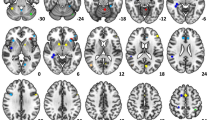Abstract
Objective:
To test the capacity of a sentence verification (SV) task to reliably activate receptive language areas. Presurgical evaluation of language is useful in predicting postsurgical deficits in patients who are candidates for neurosurgery. Productive language tasks have been successfully elaborated, but more conflicting results have been found in receptive language mapping.
Materials and methods:
Twenty-two right-handed healthy controls made true-false semantic judgements of brief sentences presented auditorily.
Results:
Group maps showed reliable functional activations in the frontal and temporoparietal language areas. At the individual level, the SV task showed activation located in receptive language areas in 100% of the participants with strong left-sided distributions (mean lateralisation index of 69.27).
Conclusion:
The SV task can be considered a useful tool in evaluating receptive language function in individual subjects. This study is a first step towards designing the fMRI task which may serve to presurgically map receptive language functions.


Similar content being viewed by others
References
Sabsevitz DS, Swanson SJ, Hammeke TA et al (2003) Use of preoperative functional neuroimaging to predict language deficits from epilepsy surgery. Neurology 60:1788–1792
Sunaert S (2006) Presurgical planning for tumour resectioning. J Magn Reson Imaging 23:887–905
Baxendale S (2009) The Wada test. Curr Opin Neurol 22:185–189
Petrella JR, Shah KM, Harris KM et al (2006) Preoperative functional MR imaging localization of language and motor areas: effect on therapeutic decision making in patients with potentially resectable brain tumors. Radiology 240:793–802
Powell HW, Duncan JS (2005) Functional magnetic resonance imaging for assessment of language and memory in clinical practice. Curr Opin Neurol 18:161–166
Adcock JE, Wise RG, Oxbury JM et al (2003) Quantitative fMRI assessment of the differences in lateralization of language-related brain activation in patients with temporal lobe epilepsy. Neuroimage 18:423–438
Benson RR, FitzGerald DB, LeSueur LL et al (1999) Language dominance determined by whole brain functional MRI in patients with brain lesions. Neurology 52:798–809
Springer JA, Binder JR, Hammeke TA (1999) Language dominance in neurologically normal and epilepsy subjects: a functional MRI study. Brain 122:2033–2046
Lehéricy S, Cohen L, Bazin B et al (2000) Functional MR evaluation of temporal and frontal language dominance compared with the Wada test. Neurology 54:1625–1633
Rutten GJ, Ramsey NF, van Rijen PC et al (2002) fMRI-determined language lateralization in patients with unilateral or mixed language dominance according to the Wada test. Neuroimage 17:447–460
Sabbah P, Chassoux F, Leveque C et al (2003) Functional MR imaging in assessment of language dominance in epileptic patients. Neuroimage 18:460–467
Woermann FG, Jokeit H, Luerding R et al (2003) Language lateralization by Wada test and fMRI in 100 patients with epilepsy. Neurology 61:699–701
Carpentier A, Pugh KR, Westerveld M et al (2001) Functional MRI of language processing: dependence on input modality and temporal lobe epilepsy. Epilepsia 42:1241–1254
Gaillard WD, Hertz-Pannier L, Mott SH et al (2000) Functional anatomy of cognitive development: fMRI of verbal fluency in children and adults. Neurology 54:180–185
Hertz-Pannier L, Gaillard WD, Mott SH et al (1997) Noninvasive assessment of language dominance in children and adolescents with functional MRI: a preliminary study. Neurology 48:1003–1012
Deblaere K, Backes WH, Hofman P et al (2002) Developing a comprehensive presurgical functional MRI protocol for patients with intractable temporal lobe epilepsy: a pilot study. Neuroradiology 44:667–673
Price C (2000) The anatomy of language: contributions from functional neuroimaging. J Anat 197:335–359
Binder JB, Swanson SJ, Hammeke TA, Sabsevitz DS (2008) A comparison of five fMRI protocols for mapping speech comprehension systems. Epilepsia 49:1980–1997
Oldfield RC (1971) The assessment and analysis of handedness: the Edinburgh inventory. Neuropsychologia 9:97–113
Rutten GJ, Ramsey NF, Van Rijen PC et al (2002) Reproducibility of fMRI determined language lateralization in individual subjects. Brain Lang 80:421–437
Auer T, Frahm J (2009) Functional MRI using one- and two-threshold approaches in SPM5. Neuroimage 47(Suppl 1):S102
Sakai KL, Hashimoto R, Homae F (2001) Sentence processing in the cerebral cortex. Neurosci Res 39:1–10
Pujol J, Deus J, Losilla JM, Capdevila A (1999) Cerebral lateralization of language in normal left-handed people studied by functional MRI. Neurology 52:1038–1043
Foki T, Gartus A, Geissler, Beisteiner R (2008) Proving overtly spoken language at sentential level—a comprehensive high-field BOLD-fMRI protocol reflecting everyday language demands. Neuroimage 39:1613–1624
Crinion JT, Lambon-Ralph MA, Warburton EA et al (2003) Temporal lobe regions engaged during normal speech comprehension. Brain 126:1193–1201
Branne JH, Badie B, Moritz CH et al (2001) Reliability of functional MR imaging with word-generation tasks for mapping Broca’s area. AJNR Am J Neuroradiol 22:1711–1718
Stippich C, Mohammed J, Kress B et al (2003) Robust localization and lateralization of human language function: an optimized clinical functional magnetic resonance imaging protocol. Neurosci Lett 346:109–113
Gallard WD, Balsamo L, Xu B et al (2002) Language dominance in partial epilepsy identified with an fMRI reading task. Neurology 59:256–265
Ramsey NF, Sommer IE, Rutten GJ, Kahn RS (2001) Combined analysis of language tasks in fMRI improves assessment of hemispheric dominance for language functions in individual subjects. Neuroimage 13:179–733
Bartha L, Brenneis Ch, Snocke M et al (2003) Medial temporal lobe activation during semantic language processing: fMRI findings in healthy left- and right-handers. Brain Res Cogn Brain Res 17:339–346
Acknowledgements
This study was supported by an FPU scholarship to AS from the Spanish Ministry of Science and Technology, and two grants to CA from the BrainGlot Project (funded by the Consolider-Ingenio 2010 programme) and the Generalitat Valenciana to encourage research in the healthcare system.
Conflict of interest statement
We declare that we have no conflict of interest.
Author information
Authors and Affiliations
Corresponding author
Rights and permissions
About this article
Cite this article
Sanjuán, A., Forn, C., Ventura-Campos, N. et al. The sentence verification task: a reliable fMRI protocol for mapping receptive language in individual subjects. Eur Radiol 20, 2432–2438 (2010). https://doi.org/10.1007/s00330-010-1814-7
Received:
Revised:
Accepted:
Published:
Issue Date:
DOI: https://doi.org/10.1007/s00330-010-1814-7




